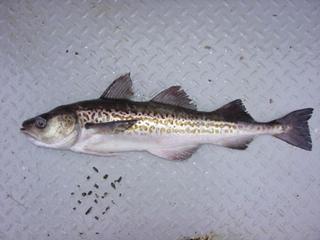Despite Disagreements, Pollock Quota Rises

Friday, December 07 2012
After a few shaky years, the amount of pollock that fishermen can catch in the Bering Sea is on the rise.
The North Pacific Fishery Management Council met up in Anchorage this week to set catch limits for several fisheries. In 2013, fishermen will be going after 1.266 million metric tons of pollock. That exceeds the limit that was pitched to the council by their own advisory panel, made up of industry stakeholders.
It’s a very different picture from 2011, when fishermen weren’t able to catch their full allotment of pollock, and the stocks were thought to be on the decline. To protect the fishery down the road, fishermen at last year's NPFMC meeting asked for lower limits than what biologists were saying was safe.
The fishery's performed much better since then. But there was still disagreement this week as to whether it was time to bump up the pollock limits, or whether the council was still aiming too high. And this time, a lot of it focused on how to divide up the Bering Sea fisheries among pollock and other groundfish.
Glenn Reed works for the Pacific Seafood Processors’ Association. He was part of an industry group trying to piece together their own ideal catch limits to present to the council. There was a lot of debate, but Reed said it didn’t go anywhere.
"In our group, we had people supporting an [allowable catch] as high as 1.3 and as low as 1.25 [million tons]," Reed said. "But internally, we weren't able to agree. The way we work is if we don't all agree on one thing, we don't do anything -- which is why you see me in the back of the room a lot, doing just that."
Ultimately, the final limit came from a proposal by an NPFMC council member. It passed by a 10-1 vote. The only no was from Roy Hyder, who works for Oregon’s fish and wildlife office.
Hyder said he wanted to stick with what the council's advisors recommended. He also said he couldn’t make heads or tails of what fishermen actually wanted. For the second year in a row, they didn't present a unified front to the council.
"We’re drifting in the direction where industry is not going to have to come together and fine-tune their proposals [so] they would finally come to an agreement," Hyder said.
The council also voted to increase pollock catch limits in the Gulf of Alaska for 2013.
Clarification: The advisory team referred to in this story includes representatives from fishing companies and conservation groups. They do not make scientific recommendations to the council.




Bering Sea Pollock Fisherman on Monday, December 10 2012:
I am saddened by the shallow reporting of commercial fisheries exhibited by this article.
The article fails to appreciate the difference between scientific recommendations for an Allowable Biological Catch (ABC) and industry recommendations for a Total Allowable Catch (TAC), which in the Bering Sea is constrained by law to a total for all groundfish species of 2.0 million metric tons, regardless of the ABC. This is an important distinction. The Council's Science and Statistical Committee recommended an ABC of 1.375 million metric tons of pollock, and the total ABC for groundfish was somewhere around 2.6 million. Since 2.6 is greater than 2.0, not everybody could harvest every fish in the scientifically allowable biological catch under the cap.
The reason industry could not agree on a TAC is not because pollock fishermen wanted to catch more than the scientists recommended, but rather because other fishermen (notably the H&G trawlers in the Amendment 80 fleet) wanted to increase their catch of other species, especially flatfish and Pacific ocean perch. Given the importance of pollock landings to the Unalaska community and that flatfish and POP are processed at sea, this is a distinction that should be reported to the audience of KUCB.